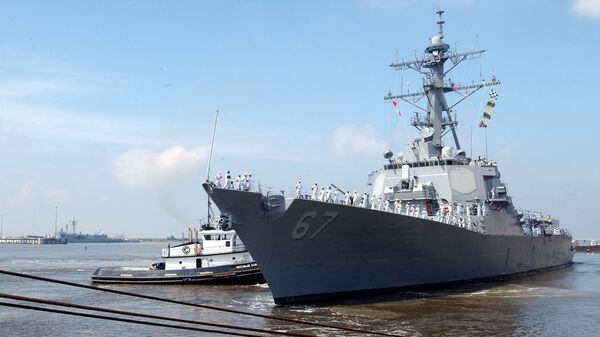The US Navy has a number of unmanned underwater vehicles (UUV), also known as underwater drones. They are able to operate underwater without a human occupant.
These vehicles can be divided into two categories — remotely operated underwater vehicles (ROVs), which are controlled by a remote human operator, and autonomous underwater vehicle (AUVs), which operate independently of direct human contact.
The problem is that these submersible drones are vulnerable when they surface to recharge, which is why the US Department of Defense Space and Naval Warfare Systems Command (SPAWAR) has developed a wireless charging system.
A group of researchers at SSC Pacific are developing undersea wireless power transfer systems for UUVs. #TechTuesday pic.twitter.com/iL47TVdrLk
— SPAWAR (@SPAWARHQ) August 22, 2017
"Unmanned and autonomous systems are used extensively for Navy missions and will continue to play a large role in future Navy and joint scenarios. While most of these systems are able to perform their mission without human interaction, limitations in the amount of power that can be stored place a limit on the overall system autonomy," said Dr. Alex Phipps, chief of the Advanced Integrated Circuits and Sensors Branch at SPAWAR.
SPAWAR demonstrated the technology by using a mobile phone.
Wayne Liu, who is leading the wireless charging project, was able to charge his mobile phone, which was protected by a plastic bag underwater, using the new technology.
Dr. Phipps said that this latest development will no doubt help the US Navy, who do not want to find themselves with incompatible charging devices.
"Currently, if the navy buys one underwater vehicle and some sort of charger, it will only work with that brand or that particular type. What we're looking to do is capture the common elements that can be reused for vehicles, and create a standard that we can give to industry," Dr. Phipps said.
"Having a UUV that can travel long distances gathering intel from ports and areas of the world our surface ships and underwater craft typically can't go is going to increase the effectiveness of them. It's also going to make missions safer, because service members will no longer need to accompany the machine, potentially into harm's way. It's a safer, more cost-effective option that we're really excited about," he added.


